When planning a custom web application, estimating costs accurately is critical. Tools like cost calculators and templates help businesses predict budgets based on features, technology, and team models. Here's what you need to know:
- Costs: Development can range from $20,000 for basic apps to over $250,000 for complex systems.
- Factors: Key cost drivers include design complexity (20–50% of the budget), technology stack, developer rates ($143–$172/hour in the U.S.), and ongoing maintenance (10–25% of initial costs).
- Challenges: Limited tech talent and unfilled developer roles (78%) make precise tools essential.
- Tools: Popular options include WebFX, Webflow, Upqode, and custom templates, offering features like interactive forms, phase-by-phase breakdowns, and geographic pricing adjustments.
Quick Tip: Define your project scope and essential features before using any tool for the best results. Below, we explore the strengths of different tools and how to choose the right one for your needs.
Project Cost Calculator | Estimate the Cost for Developing Mobile or Web App
Key Features to Look for in Cost Estimation Tools
When planning a custom web app project, having the right cost estimation tool can make budgeting much more manageable. The best tools don’t just spit out rough numbers - they provide detailed insights into every financial aspect of your project. Here’s what to look for to ensure you’re getting accurate and actionable estimates.
Interactive Input Forms and Feature Selection are essential for precision. The most effective tools allow you to select and customize features like authentication, payment gateways, content management systems, social media integration, third-party API connections, multi-language support, e-commerce functionalities, and geolocation services. With granular input options, you can see how each feature impacts time and cost, making it easier to plan your budget.
It’s also crucial that the tool can assess UI/UX design complexity. This includes factoring in the number of screens, animations, and interactive elements, which can significantly affect costs.
Your technology stack plays a big role in cost estimation. Whether you’re considering front-end frameworks like React or Angular, back-end technologies such as Node.js or Python, or specific database and mobile solutions, these choices influence both your budget and timeline. A good tool adjusts estimates based on the complexity and resource demands of your selected technologies.
Geographic and Team Model Adjustments are another must-have feature. The tool should account for region-specific pricing and offer flexibility in hiring models - whether you’re working with freelancers, building an in-house team, or outsourcing. Regional and team variations can significantly impact overall development costs.
A quality tool will provide phase-by-phase cost breakdowns. This includes detailed budgets for research and planning, design, front-end and back-end development, testing, and deployment. Such breakdowns help you understand cash flow needs and identify areas where you might save money.
Don’t overlook hidden and post-launch costs. Comprehensive tools factor in ongoing expenses like maintenance, hosting, API subscriptions, scalability, and cybersecurity. These often-overlooked costs can add up, so having them included in your estimates is invaluable.
Transparency in Assumptions is what separates advanced tools from basic calculators. A professional-grade tool outlines the assumptions behind its calculations, helping you see exactly how figures are derived. This clarity allows you to tweak assumptions to better match your project’s specifics, ensuring more accurate and reliable estimates.
Lastly, look for tools that provide realistic timeline estimates alongside cost projections. Knowing both the financial and time commitments helps you allocate resources effectively and set clear expectations with stakeholders.
| Feature Category | Key Capabilities | Why It Matters |
|---|---|---|
| Input & Customization | Interactive forms, detailed feature selection, UI/UX complexity assessment, technology stack configuration | Ensures estimates align with your project’s unique requirements rather than relying on generic assumptions |
| Cost Factors & Analysis | Geographic pricing, team model options, phase-by-phase breakdowns, hidden cost inclusion | Provides a realistic budget that accounts for all variables, including ongoing expenses |
| Transparency & Planning | Clear documentation of assumptions, timeline estimation | Helps with informed decision-making and effective project planning |
To get the most reliable estimates, clearly define your project’s scope and essential features before using any tool. The more specific and detailed your inputs, the better the results you’ll get. Taking the time to thoroughly outline your needs will save you headaches later in the planning and execution stages.
1. WebFX Website Design Cost Calculator
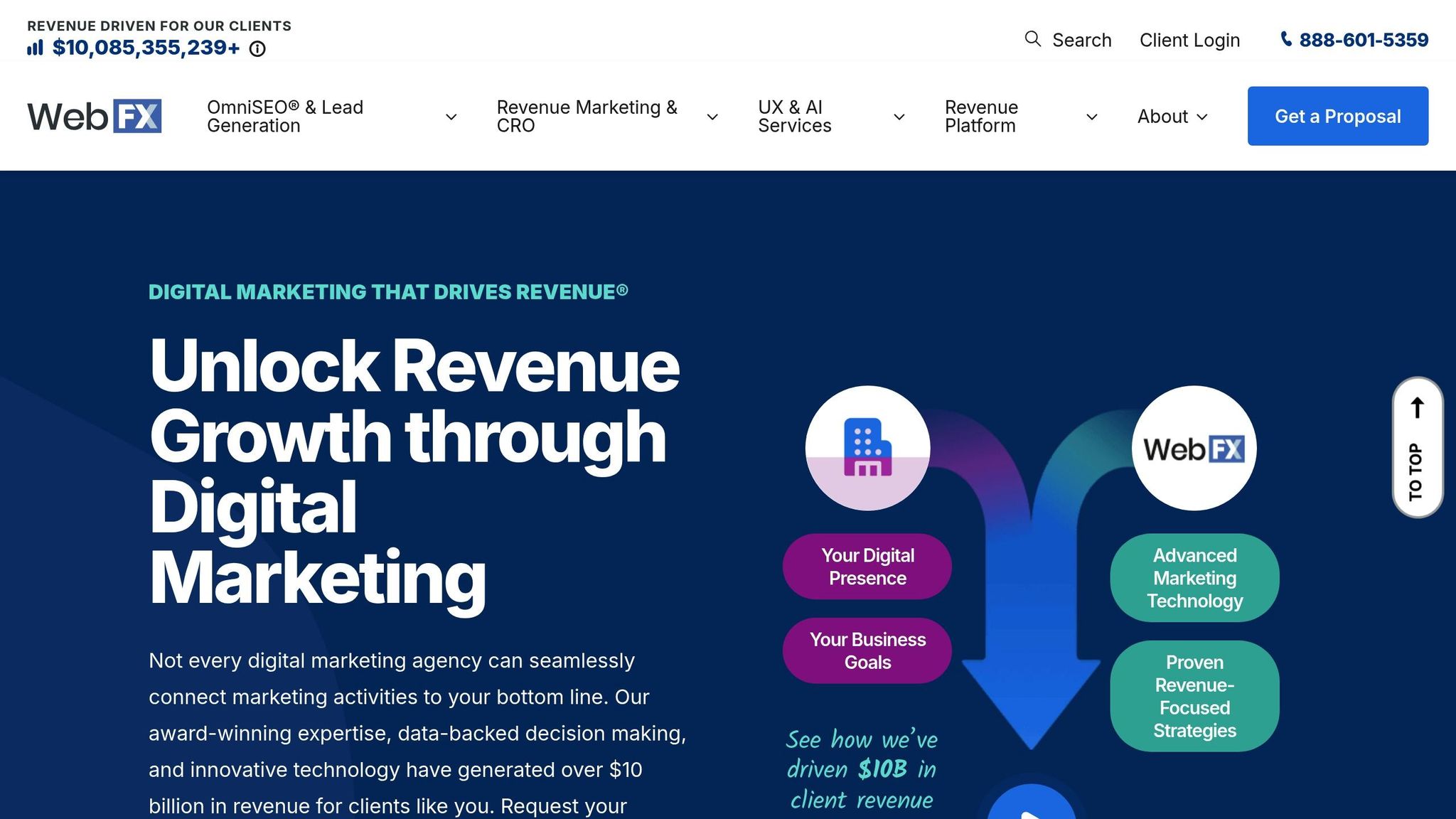
WebFX's Website Design Cost Calculator is a great example of how interactive tools can provide users with both a detailed breakdown and an estimated cost range. This tool not only gives you a ballpark figure but also encourages a follow-up consultation to nail down the specifics.
Input Customization
The calculator is designed to be flexible, letting you tailor the inputs to your project's needs. For example, you can select the "Number of Pages" based on the size of your site - ranging from 1–75 pages for smaller projects to 150–250 for larger ones, with the option to request custom quotes for anything beyond 250 pages.
You can also adjust "Design Complexity" to match your vision, choosing from options like Basic, Intermediate, Advanced, or even "zero styling" for simpler designs.
On the technical side, the tool allows you to specify features like database integration, e-commerce functionality, and CMS capabilities, with levels categorized as Basic, Intermediate, or Advanced. Other customization options include SEO strategy (based on the number of keywords to optimize), professional copywriting, and responsive design complexity to ensure your site looks great on all devices.
Output Detail Level
Rather than overwhelming you with a detailed line-by-line breakdown, the tool provides an estimated price range (e.g., "$X – $Y"). For precise pricing, it directs users to fill out a consultation form.
US Pricing Support
The calculator is tailored for the US market, using data from 250 local professionals to generate its estimates. All pricing is presented in US dollars, making it easy for businesses in the United States to budget accordingly.
Best Use Case
This tool is particularly suited for business websites and e-commerce platforms, especially those with multiple pages and integrated features. For projects requiring advanced integrations, a direct consultation is recommended. Next, we’ll take a look at another popular cost estimator tool that builds on these features.
2. Webflow Website Cost Calculator
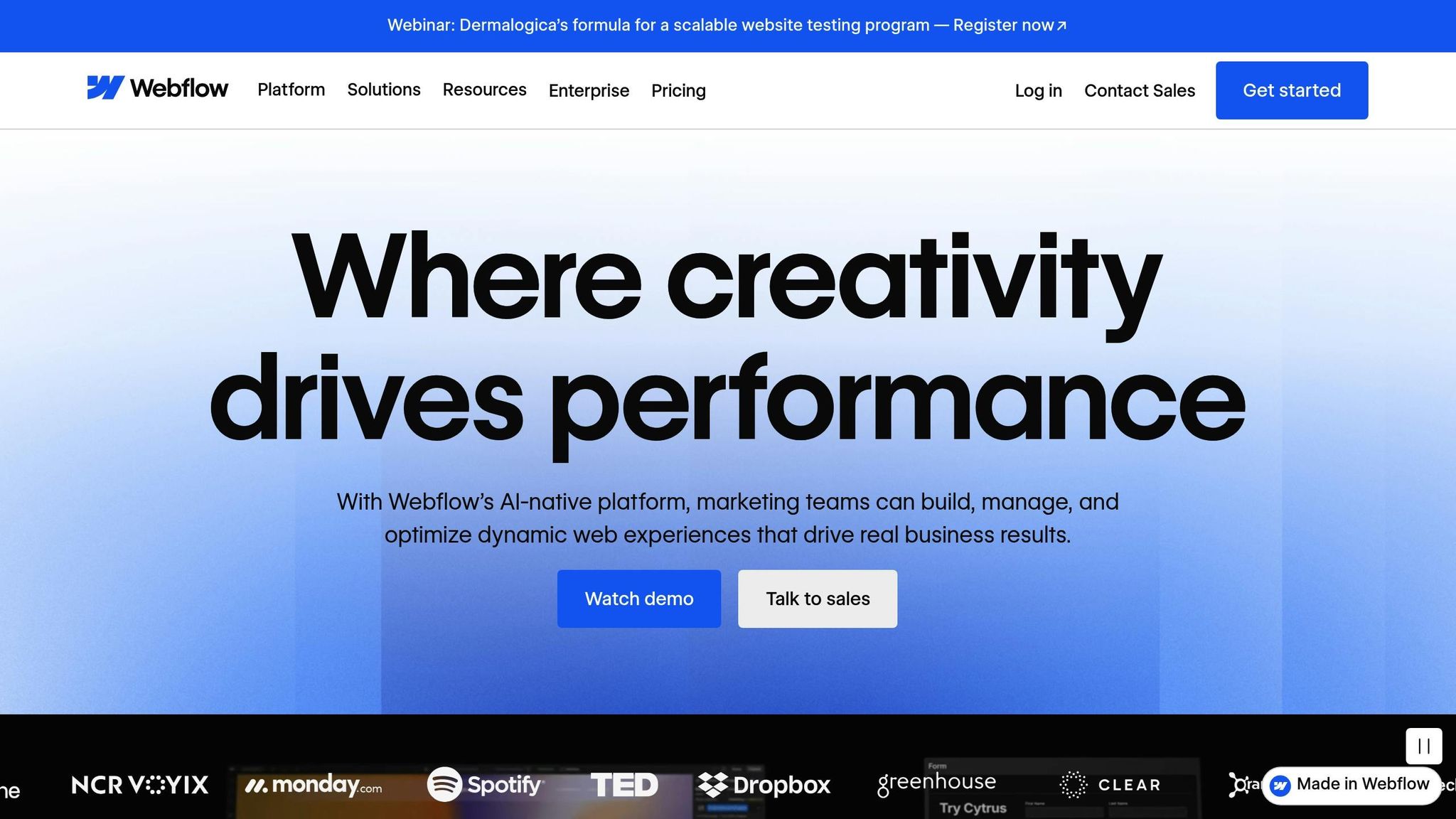
Webflow pairs its transparent pricing model with third-party tools, like the Webflow Website Project Cost Calculator from Graceful Web Studio, to provide a quick way to estimate project costs. This setup makes the initial estimation process smooth and straightforward.
Input Customization
The Webflow Website Project Cost Calculator includes preset options tailored to common project types. Users can select scenarios like a startup website, an enterprise redesign, or a multilingual site. The tool then considers factors such as CMS complexity, custom features, and the overall project scope to generate a rough estimate. By using predefined templates, it delivers a quick snapshot of potential costs, making it ideal for early-stage planning. For projects that fall outside these templates, a more detailed consultation is recommended.
Output Detail Level
The calculator provides a high-level estimate without breaking down specific costs line by line. For instance:
- A One-Page Small Start-up Business Website is estimated at around $2,000.
- A Bank Website Redesign with a Complex CMS comes in at approximately $6,500.
- A Custom Church Website with Multilingual CMS is roughly $8,500.
"We'll confirm scope in a consultation and follow up with a more accurate estimate tailored to your business needs." – Graceful Web Studio
US Pricing Support
All estimates and platform pricing are listed in USD, aligning with US pricing standards. Webflow's plans start at $14/month for basic sites, with costs increasing as additional features are added.
Best Use Case
This tool is most effective for projects that align with Webflow's strengths in visual design and content management. It’s particularly useful for scenarios similar to the examples provided by the calculator, offering a quick estimate to help guide initial planning. Up next, we’ll look at another tool that takes cost estimation a step further.
3. Upqode Website Cost Calculator
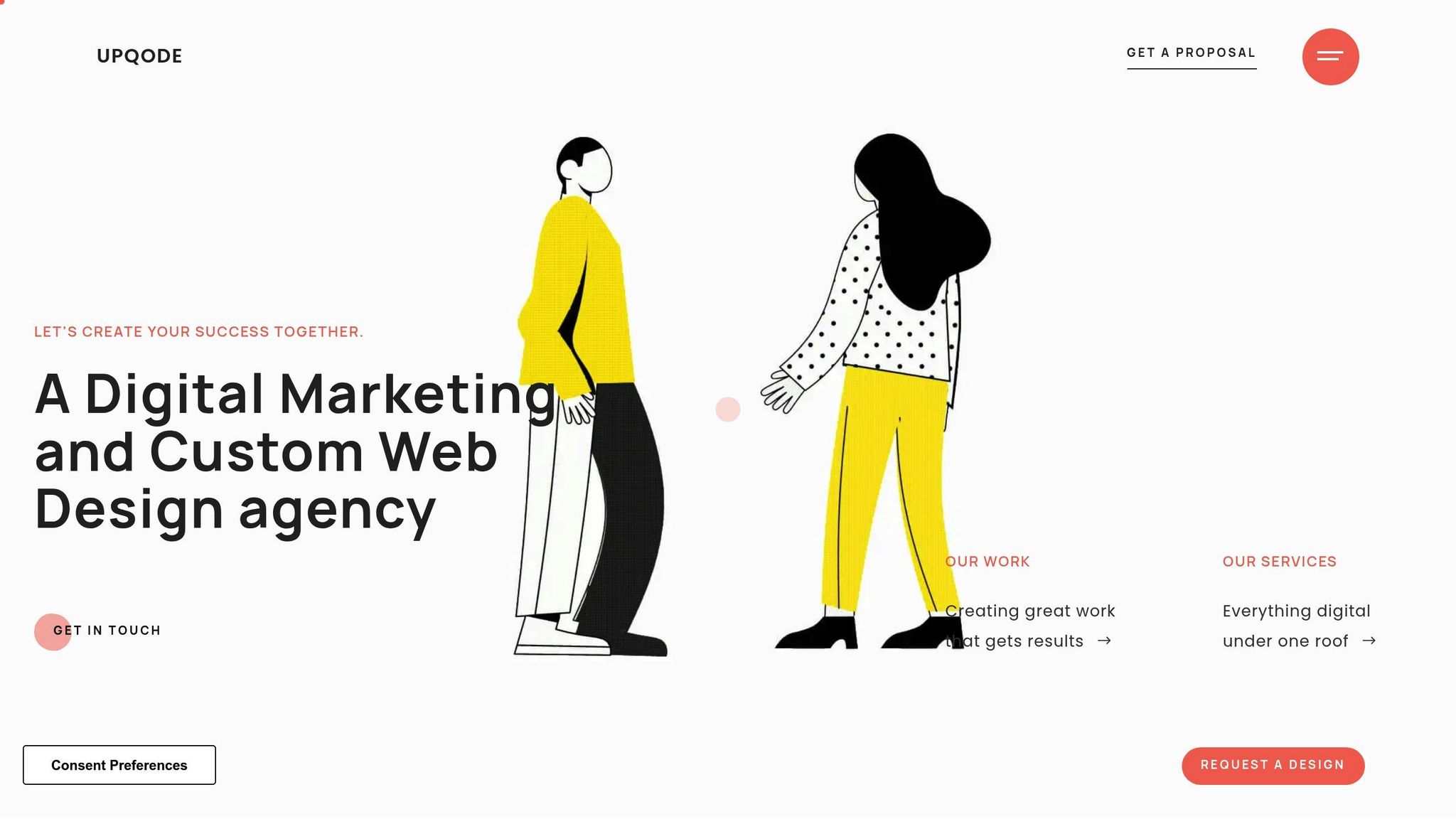
Upqode offers a user-friendly cost calculator that combines automated estimates with a free expert consultation, making it easier to get an accurate idea of project costs. This two-step approach begins with a quick automated estimate, which is then fine-tuned during a consultation to account for the specific needs and challenges of your project.
Input Customization
The calculator gathers essential details such as project goals, platform preferences, and desired features. This simple setup is especially useful for business owners who may not have technical expertise but need an initial budget framework to guide their planning.
Consultation for Precision
Once the automated estimate is generated, users can connect with an expert to refine the numbers. This step ensures that the estimate reflects the unique complexities and requirements of the project, providing a more tailored and accurate cost assessment.
General Price Range with Clarity
The calculator initially provides a broad price range. For a detailed breakdown of costs, users can rely on the expert consultation to gain deeper insights into specific expenses.
US Dollar Estimates
All pricing is presented in U.S. dollars, making it easier for users to align estimates with their budgets. The consultation also takes into account U.S. market standards for web development, ensuring the costs are relevant and practical.
Ideal for Consultative Budgeting
This tool is particularly suited for businesses that value a collaborative approach to cost estimation. It’s perfect for teams looking to start with a quick automated estimate and then refine it through expert advice, especially when project requirements are still evolving. Next, let's explore how HubSpot handles website redesign cost calculations.
4. HubSpot Website Redesign Cost Calculator
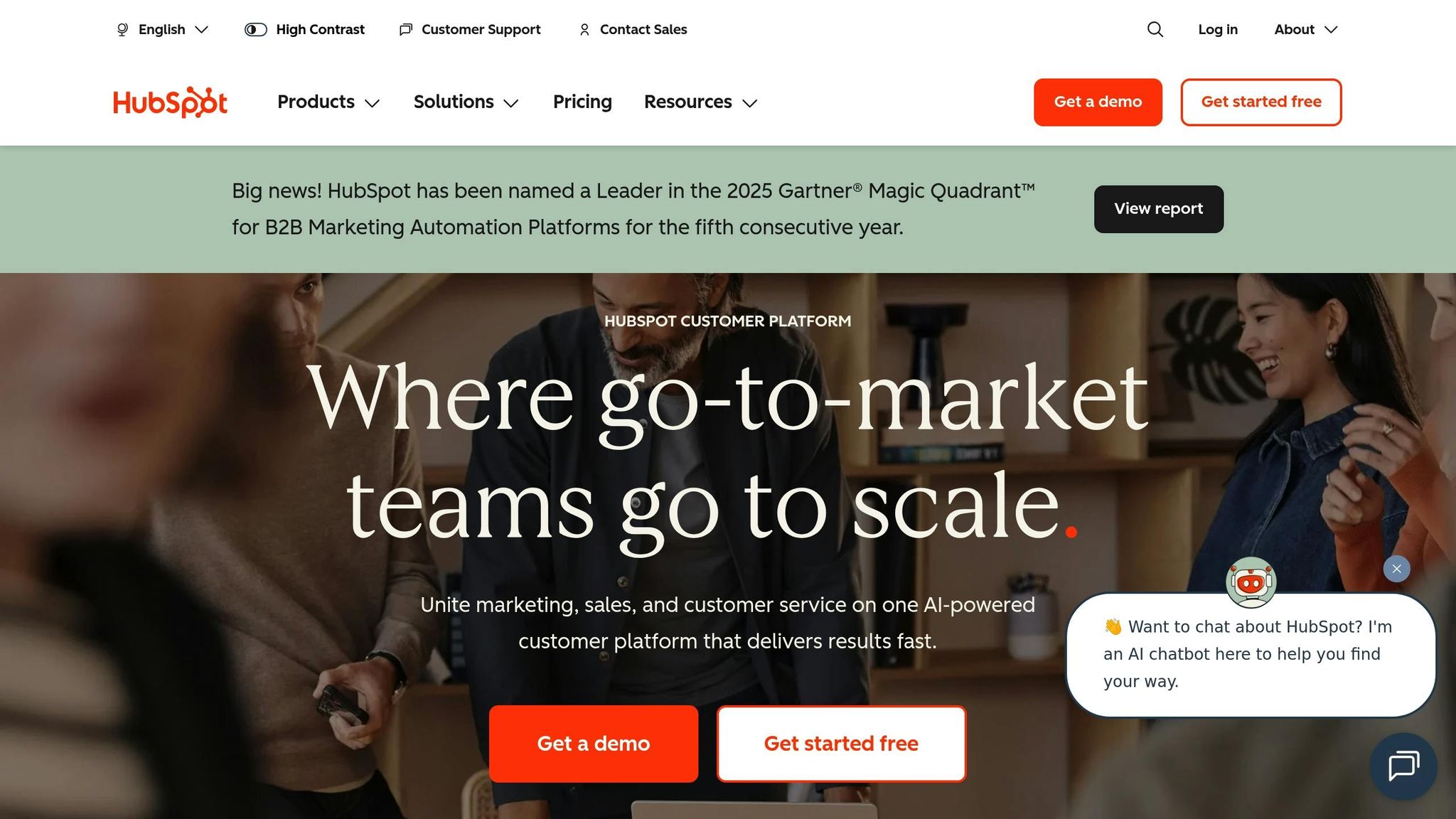
HubSpot takes a slightly different route when it comes to estimating costs for website redesigns. Instead of a traditional website redesign calculator, they offer a Total Cost of Ownership (TCO) Calculator. This tool is geared toward helping users budget for custom web apps by focusing on costs tied to HubSpot's software platform.
Input Customization
The TCO Calculator breaks down project costs with an emphasis on platform integration. Users can input key cost factors, such as software licensing, implementation, integration, and personnel expenses. What makes this tool stand out is its ability to compare costs directly. It provides a side-by-side view with columns for "HubSpot Cost" and "Comparison Cost", making it easier to evaluate HubSpot's pricing against other providers.
Output Detail Level
Rather than delivering exact figures, the calculator provides approximate cost ranges. HubSpot emphasizes that these estimates are for guidance only, as real costs depend on factors like industry complexity, project scope, and team size.
"The outputs generated by this calculator are intended for informational purposes only and are provided 'as is,' without any guarantee of completeness, accuracy, timeliness, or specific results obtained from using this information. There is no warranty of any kind." – HubSpot
This approach helps users grasp the broader budgeting picture without overpromising precision.
U.S. Pricing Support
All pricing is displayed in U.S. dollars, making it easier for businesses operating within the U.S. to align the estimates with their budgets.
Best Use Case
The TCO Calculator is particularly helpful for businesses planning to build SaaS applications or enterprise portals that integrate with HubSpot. It offers a clear starting point for understanding the total cost of ownership when relying on HubSpot's infrastructure. While the tool is ideal for initial budgeting and internal discussions, working closely with HubSpot representatives will provide more tailored and accurate estimates.
Next, we’ll dive into how WordPress-focused cost calculators approach web application budgeting.
5. WP Cost Calculator (by StylemixThemes)
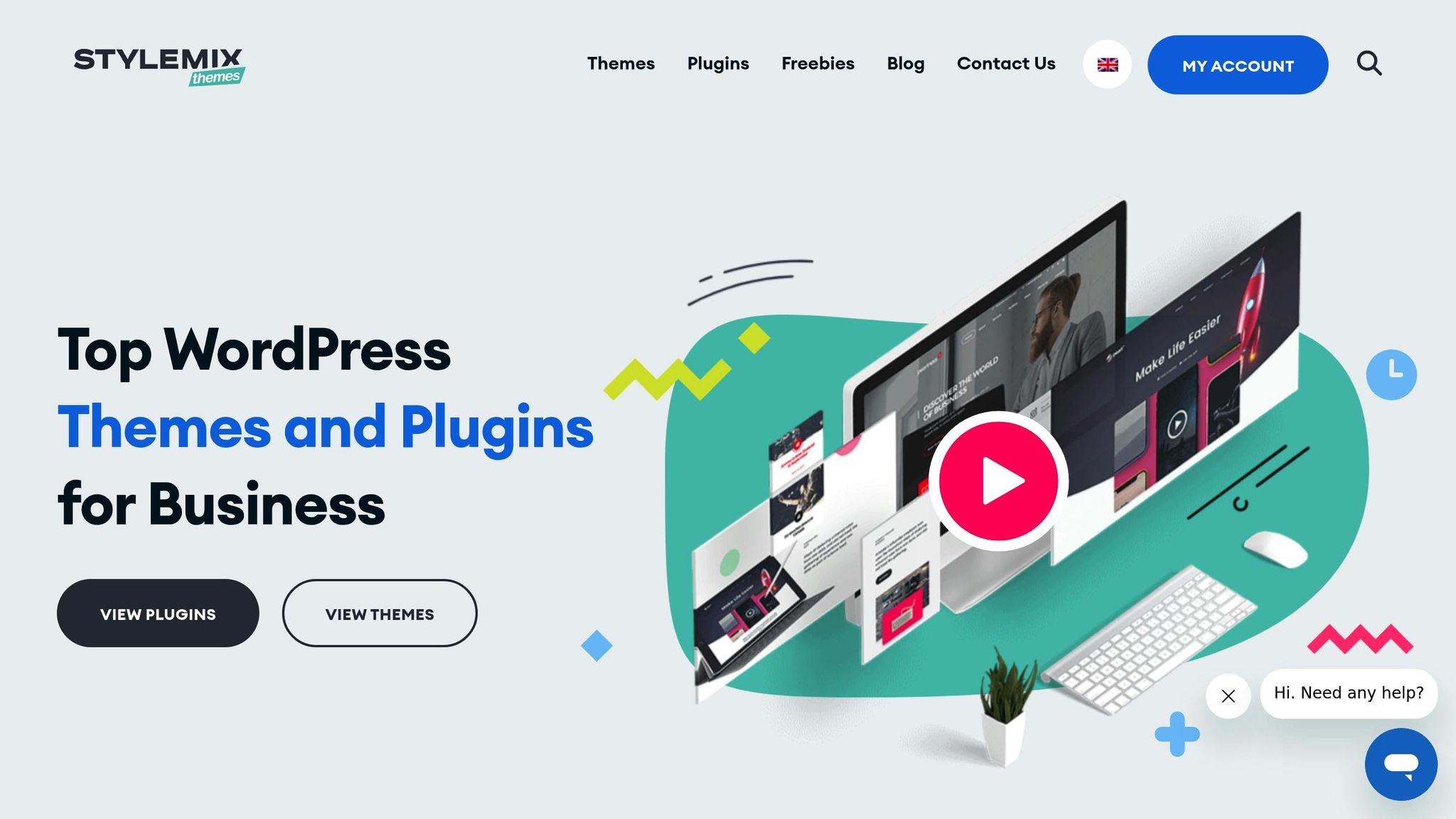
The WP Cost Calculator - also known as "Cost Calculator Builder" on WordPress.org - is a WordPress plugin developed by StylemixThemes. It's designed to help users build custom price estimation forms with ease. With a solid 4.5/5 rating from 378 reviews, it’s a popular choice for creating tailored pricing systems.
Input Customization
This plugin goes beyond basic calculators, offering advanced features like conditional logic, multiple calculation fields, and dynamic form elements. These tools allow users to create multi-step pricing estimations with detailed breakdowns. Plus, it automatically formats prices to align with U.S. currency standards.
Detailed Outputs
The WP Cost Calculator doesn’t just spit out a total - it can provide itemized cost details. If you upgrade to the Pro version, you can even integrate payment options through PayPal and Stripe for a seamless checkout experience.
U.S. Pricing Standards
The plugin handles U.S. pricing conventions effortlessly. It formats prices with dollar signs, comma-separated thousands (e.g., $1,000.00), and uses American-style decimal points.
Perfect Fit for Complex Pricing Needs
This tool shines in projects like SaaS or custom web apps that require variable pricing. Its advanced conditional logic makes it easy to create complex estimation workflows. Users have praised its simplicity and functionality:
"Very easy to use, clean interface, it does exactly what it is supposed to do." – Kelly Reyes
"The calculator is the most versatile I could get my hands on." – Eduardo Hebert
Up next, we’ll look at another tool that takes cost estimation for custom web apps to the next level.
6. ThemeIsle WordPress Website Cost Calculator
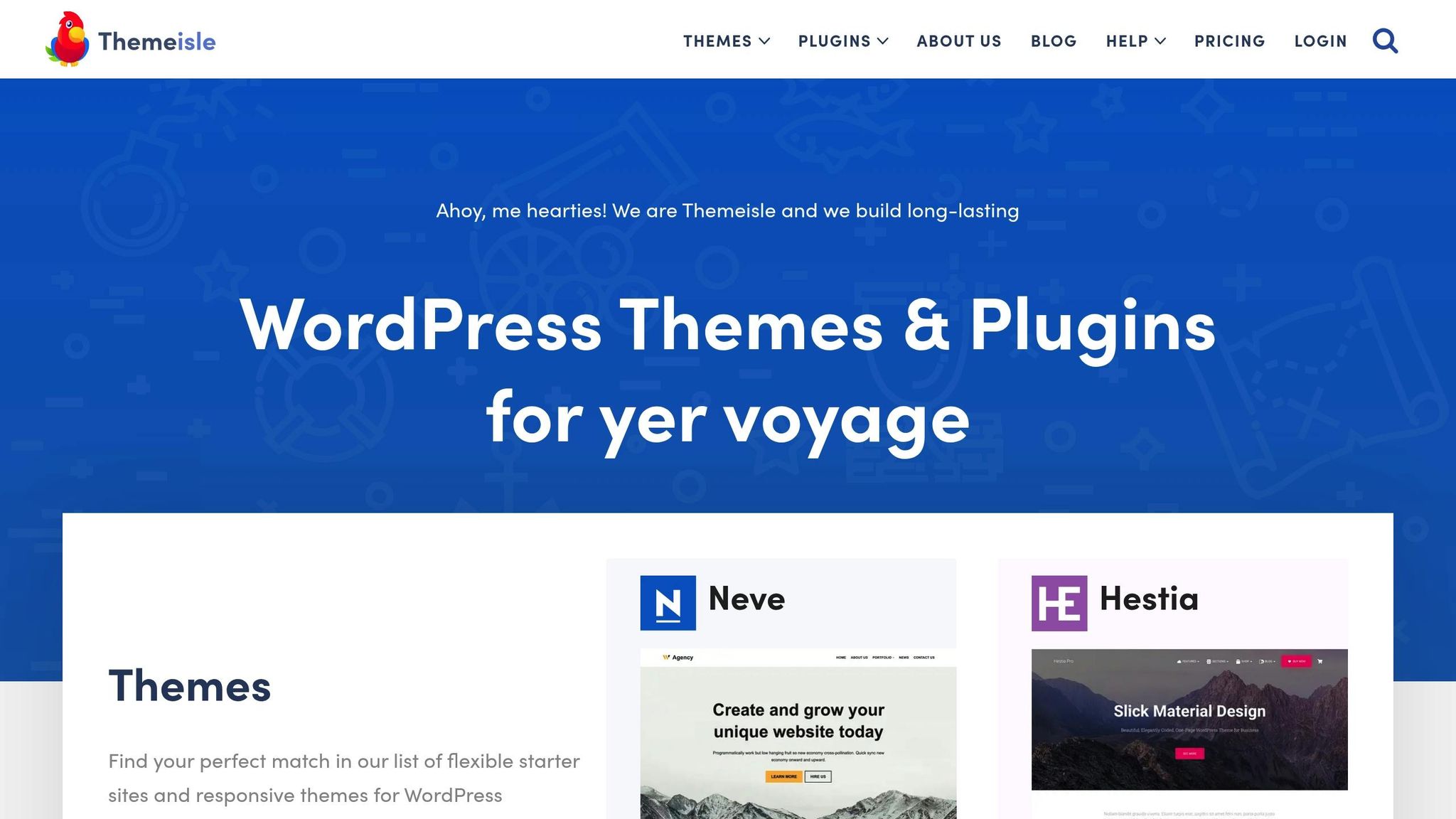
The Cost Calculator WordPress plugin, developed by ThemeIsle, is a handy tool for creating instant pricing forms directly on your website. It’s designed to simplify cost estimates while offering flexibility and customization.
Input Customization
This plugin makes it easy to design custom forms with its drag-and-drop builder. You can create as many fields, forms, and operations as you need, using input types like drop-down menus, range sliders, radio buttons, checkboxes, number fields, and even HTML elements.
If you opt for the Pro version, you unlock additional features like image-based drop-downs, file uploads, multi-range sliders, quantity fields, and date pickers. Each field can be personalized with options for labels, placeholders, default values, CSS classes, and validation. An advanced formula editor helps calculate totals based on user inputs, and the Pro version’s conditional logic allows for dynamic forms where fields can adjust based on user selections.
Output Detail Level
The plugin is designed to provide a clear and concise summary of costs. It calculates a total price based on user inputs and your predefined formulas. While it doesn’t break down individual cost components, it does display the final total prominently. Additionally, it can send form results via email, making it easier to follow up with potential clients. The plugin’s straightforward output aligns perfectly with American pricing formats, which are discussed below.
US Pricing Support
For those targeting U.S. clients, this plugin is a great fit. It supports U.S. dollar formatting, automatically adding dollar signs, comma-separated thousands (e.g., $1,500.00), and standard decimal points. These features ensure that your pricing looks professional and meets American standards.
Best Use Case
This tool is especially useful for WordPress-based developers offering custom web app development services. It shines when creating dynamic pricing forms that account for various features, complexity levels, and development stages. The Pro version adds advanced integrations and refined pricing outputs, making it an excellent choice for U.S. businesses needing accurate, real-time cost estimates for professional web app projects.
sbb-itb-8abf120
7. WPBeginner WordPress Cost Calculator
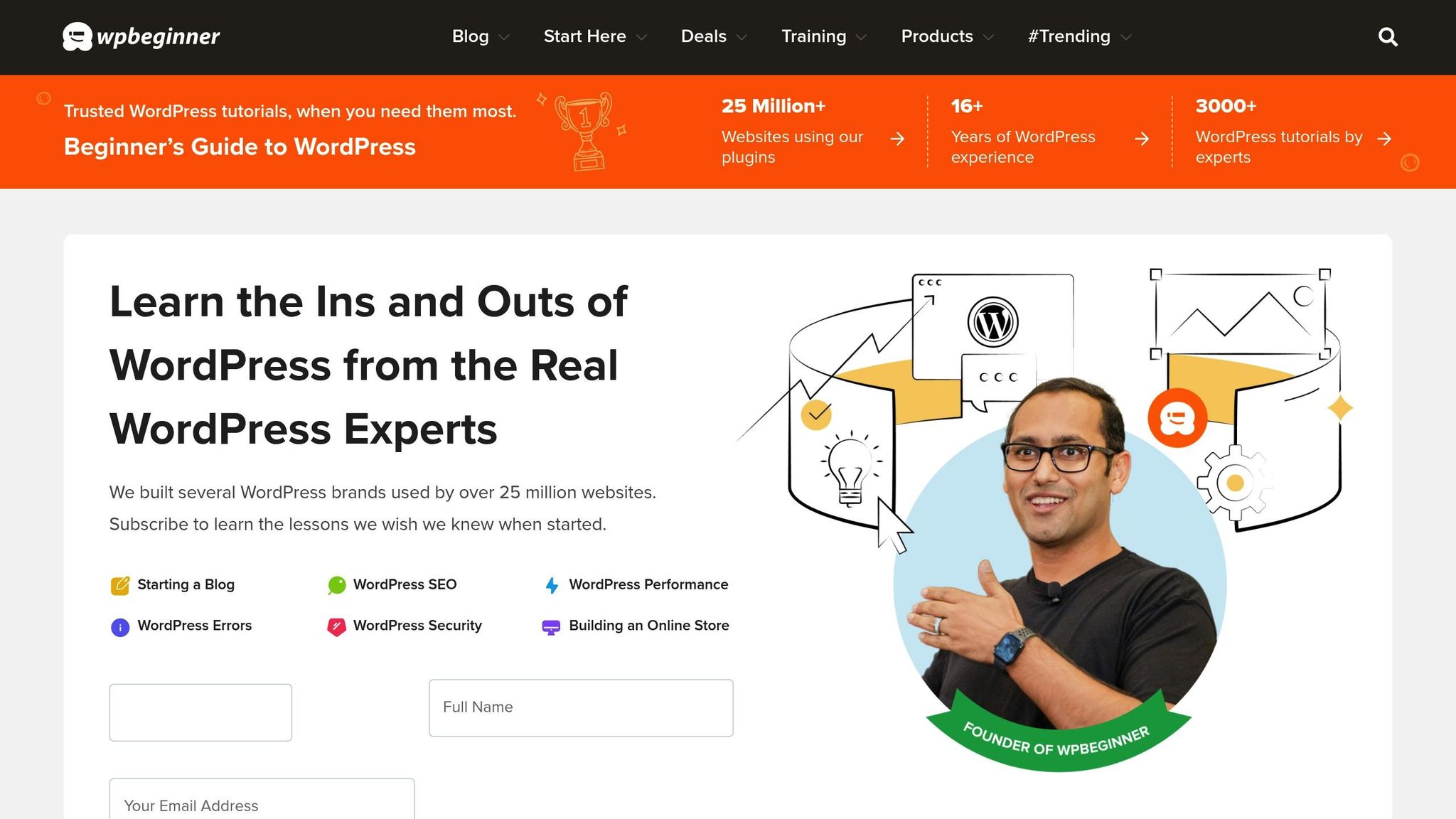
WPBeginner recommends the WPForms plugin with its Calculations addon as the go-to tool for creating custom pricing forms on WordPress websites. The WPBeginner team even uses WPForms for their own contact forms and annual surveys, showcasing their trust in the platform.
Input Customization
WPForms offers a mix of basic and advanced customization options through its drag-and-drop builder. With access to 87+ pre-built calculator templates, such as mortgage calculators, tip calculators, lease calculators, and savings and investment tools, you can easily tailor each template to meet your needs.
One standout feature is the AI Calculations tool. It simplifies the process of creating formulas by allowing users to describe their needs in plain English. As the WPBeginner Editorial Staff explains:
"Simply describe what you want to calculate in plain English. After hitting the 'Enter' button, the AI will automatically generate the correct formula, which you can add to your form in 1-click".
For those who prefer manual control, the 'Advanced' tab lets you modify formulas directly. This feature removes the hassle of writing complex formulas from scratch, making it a perfect fit for web app cost calculations.
Output Detail Level
When it comes to results, WPForms doesn’t just provide a simple total - it offers detailed breakdowns. Each submission includes all the specifics in real time, helping you see exactly how every cost component contributes to the final estimate.
Visitors can view calculation results instantly, and personalized email notifications with detailed breakdowns can be sent automatically. For further analysis, you can export form data as CSV or XLSX files, choosing specific fields to include. This makes it easy to track pricing trends and improve your estimates over time.
US Pricing Support
While WPForms doesn’t explicitly market itself as a U.S.-specific tool, it handles U.S. pricing formats effortlessly. It supports dollar amounts, percentage-based calculations, and tax computations commonly used in the U.S. WPBeginner even describes it as an:
"all-in-one tax calculator solution".
This makes it highly compatible with U.S.-based pricing needs.
Best Use Case
With its strong customization options and precise outputs, WPForms is a top choice for WordPress-based development agencies offering custom web application services. It’s especially useful for capturing leads while providing cost estimates. For example, you can collect user email addresses by offering to send detailed calculation results.
At $159.60 per year for the WPForms Pro plan, it’s an affordable solution for small to medium-sized development teams looking for professional-grade estimation tools without the need to build custom solutions. WPForms is a must-have for those working on WordPress projects who need both flexibility and accuracy in cost estimation.
8. Custom Estimation Templates (Excel/Google Sheets)
When automated calculators fall short, custom templates in Excel or Google Sheets step in as a versatile solution for estimating web app development costs. Unlike calculators that lock you into predefined categories, these templates give you full control to tailor estimates to your specific projects. They’re particularly useful for tackling unique complexities that standard tools often overlook.
Many agencies prefer custom spreadsheet templates for their flexibility and transparency. You can adjust every assumption and formula to align with your pricing model and past experiences. In fact, industry surveys reveal that over 60% of small and mid-sized agencies rely on spreadsheet-based templates for initial estimates, citing their adaptability as a major advantage. These templates can also help reduce estimation errors by up to 30% when historical project data is used.
Input Customization
Custom templates let you define detailed parameters like feature lists, technology stacks, team structures, project phases, and timelines. Instead of generic categories such as "basic", "standard", or "premium", you can create specific inputs for features like user authentication, payment gateways, or real-time chat. Many developers design modular templates that can be reused across various project types, from MVPs to SaaS applications to enterprise portals.
Detailed Output Options
One of the biggest advantages of custom templates is their ability to provide both high-level summaries and detailed breakdowns. For example, your template can include a summary view showing the total project cost, timeline, and key assumptions, alongside detailed breakdowns by development phase - frontend, backend, database design, testing, and deployment. This level of detail fosters transparency, helping clients understand exactly where their money is going and building trust in the process.
Tailored for US Pricing
These templates are particularly effective for US-based projects, as they allow you to factor in local pricing considerations. You can easily incorporate US market rates, state-specific taxes, and regional cost variations. Whether it’s accounting for differences in hourly rates across states or factoring in federal and state tax implications, custom templates ensure your estimates align with US business norms and client expectations.
Best Use Cases
Custom templates shine in scenarios where standard calculators fall short, such as complex or highly specific projects. Whether you’re estimating costs for an MVP, a SaaS platform, or an enterprise portal, these templates allow you to capture every unique requirement and constraint. They’re also ideal for agencies aiming to demonstrate transparency, as clients can see exactly how estimates are calculated - helping to build trust and streamline negotiations. Plus, Google Sheets’ collaborative features make these templates perfect for distributed teams or client-facing workshops, where everyone can contribute to or review the estimates in real time.
The best part? High-quality templates are often budget-friendly. Many are free, while more advanced, industry-specific ones typically cost between $20 and $150 as a one-time purchase. Some even integrate real-time market data, using Google Sheets add-ons to pull in current developer rates or technology costs. This combination of custom control and up-to-date information makes them an excellent tool for accurate and reliable cost estimation.
9. MOR Software Estimation Tool
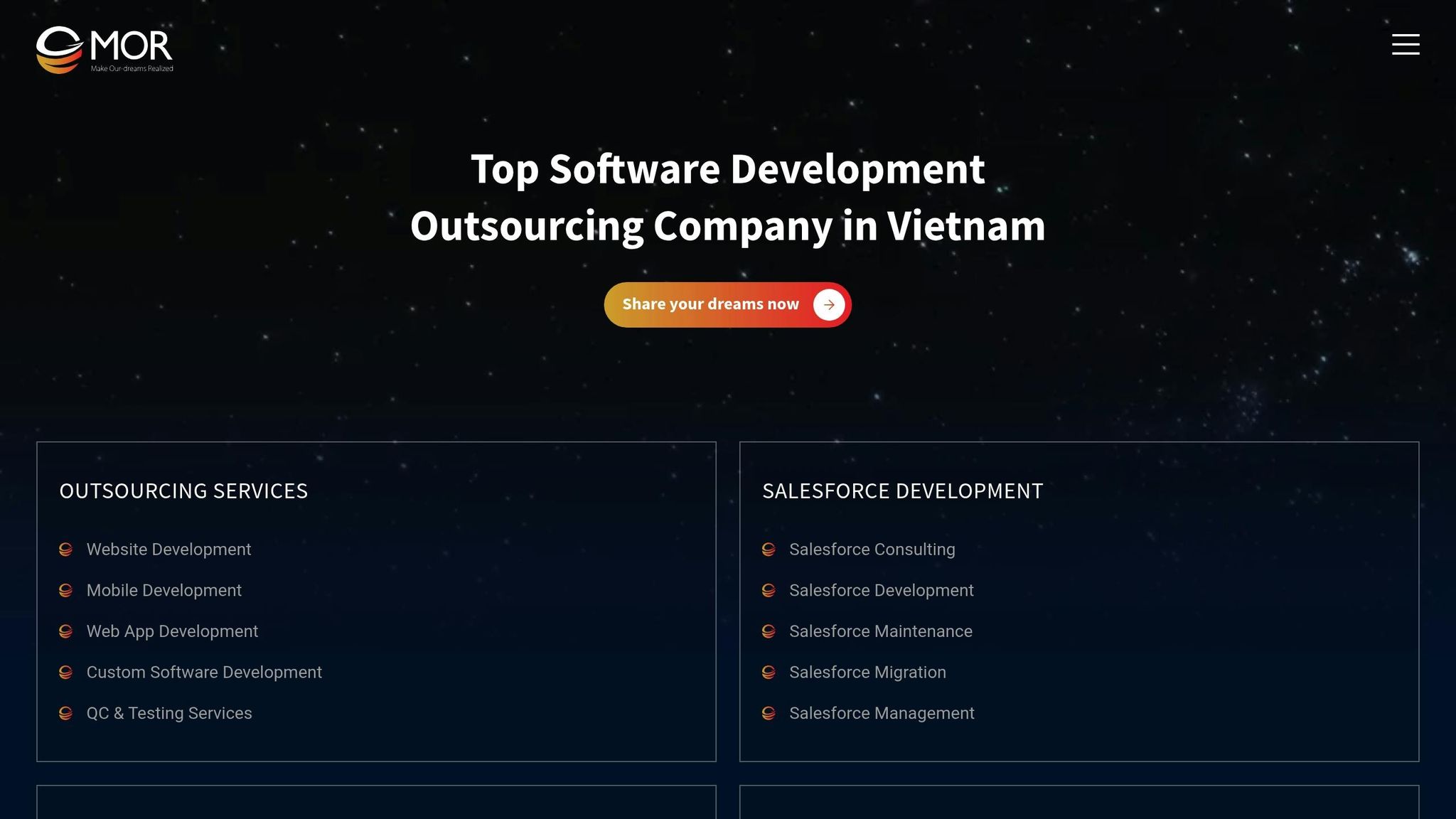
MOR Software provides a data-driven approach to project estimation, tailored to the North American development market and pricing standards. Their system uses tiered pricing based on the developer's level of expertise. For instance, junior developers typically charge between $50 and $100 per hour, while specialized developers may command rates from $150 to $300 per hour. This structured pricing ensures accurate cost allocation for each stage of development.
Output Detail Level
The tool offers a detailed breakdown of project costs, with budgets ranging from $50,000 to over $500,000, depending on the specific development phases involved.
US Pricing Support
MOR Software's data highlights that average development rates in the US fall between $100 and $200 per hour. The tool also accounts for regional pricing differences across North America, ensuring that estimates align with local economic conditions. This makes it particularly valuable for projects requiring a nuanced understanding of US-specific pricing.
Best Use Case
This estimation tool is especially effective for large-scale custom web application projects. Its detailed cost analysis and planning features allow stakeholders to set realistic budgets and timelines, making it an excellent choice for complex, high-budget endeavors.
10. Monocubed's Web App Cost Estimator
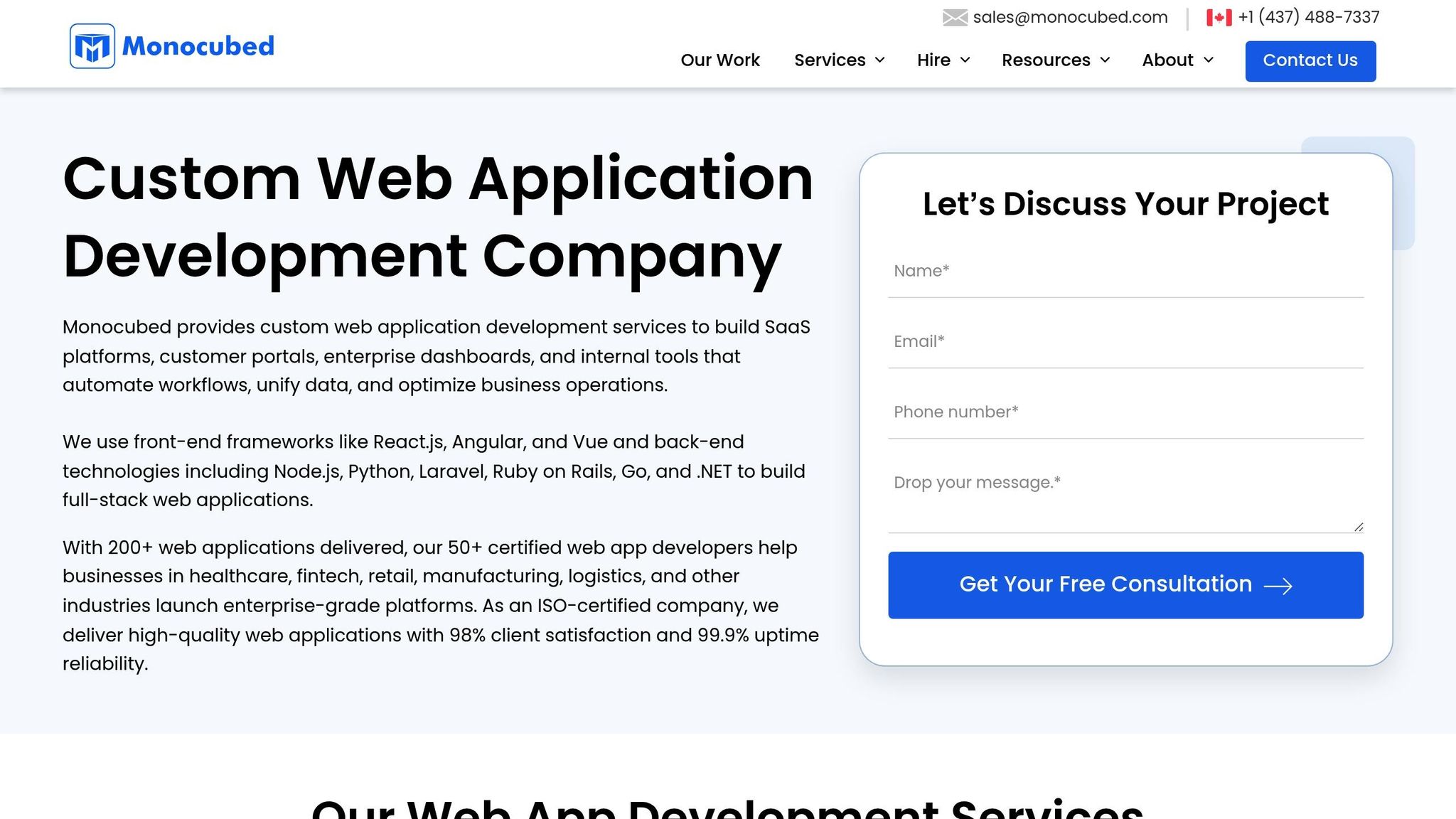
Monocubed stands out from automated estimators by offering a more tailored approach through direct consultations. Instead of relying solely on algorithms, they connect clients with development experts who craft quotes based on the specific scope and needs of each project. This hands-on method ensures no aspect of the project is overlooked.
Input Customization
The process begins with an in-depth consultation. During this phase, clients share crucial details about their project - such as its scope, complexity, desired features, technology stack, team size, hiring model, timeline, and even geographical factors. This level of detail ensures that every element affecting the cost is accounted for [55,56].
"Discuss your idea with our experts and get a personalized cost estimate for your web app idea. For free." - Monocubed
Monocubed encourages clients to prepare thorough descriptions of their web app ideas. This includes outlining core functionalities, identifying the target audience, and addressing any regulatory or technical requirements that could influence development costs [55,56].
Output Detail Level
Unlike simple summary estimates, Monocubed provides detailed cost breakdowns for each development phase and team role. Their experts analyze the project requirements to deliver precise financial projections. Here's a general breakdown of their pricing:
- Simple web apps: $3,000–$15,000
- Medium-complexity projects: $15,000–$60,000
- Complex applications: $60,000–$250,000
- Innovative web apps: Starting at $250,000
"Monocubed's web portal experts provide you with detailed cost breakdowns based on your project's needs, technical requirements, feature list, and timeline." - Monocubed
To provide further clarity, they offer fixed-price quotes to avoid unexpected cost overruns. Additionally, Monocubed includes a free 30-minute consultation to discuss project ideas before delivering formal estimates [55,56]. All estimates are designed to align with current US market rates.
US Pricing Support
With offices in Delaware and Arizona, Monocubed ensures their pricing aligns with US market standards. Estimates are provided in US dollars, reflecting hourly web development rates in North America, which typically range from $80 to $250 per hour.
Best Use Case
Monocubed specializes in enterprise-level web applications and complex portal development. With experience building over 200 web portals for businesses and startups, their expertise spans MVPs to advanced enterprise solutions. Typical cost ranges include:
- B2B portals: $30,000–$150,000
- Vendor portals: $40,000–$120,000
- HR systems: $30,000–$100,000
- Complex eCommerce apps: $50,000–$200,000
Client feedback highlights their success with challenging projects. For example, Roman Malone, President of MRS, shared:
"The team was well versed with our requirements and developed a web-based solution to manage our sales, production and overall project management. They were very attentive and responsive to any changes we required. The web platform has standardized our way of working. Our sales team is now delivering more accurate estimates and project proposals." [55,56]
Tool Comparison Table
To make selecting the right cost estimation tool easier, here's a table comparing two popular approaches. It highlights key differences, helping you decide based on your project's complexity, timeline, and budget.
| Tool | Input Customization | Output Detail Level | US Pricing Support | Best Use Case |
|---|---|---|---|---|
| Custom Estimation Templates | Full manual control over all cost components and variables | Extremely detailed breakdown of every project phase and expense | Variable - depends on your market knowledge | Ideal for complex projects requiring detailed budget tracking |
| MOR Software Estimation Tool | High - consultation-based with detailed project analysis | Comprehensive estimates with transparent pricing | Yes - tailored for the US market with 50–70% cost savings | Perfect for SMEs looking for outsourced development with cost efficiency |
Online calculators offer guided, structured input, while custom templates give you full control over every variable. The level of detail in outputs can range from basic estimates to highly specific, phase-by-phase breakdowns.
Both tools use US pricing standards, but the level of accuracy depends on how much customization the method allows. Custom templates are great for projects that require meticulous tracking, while MOR Software is better suited for SMEs aiming for clear, optimized pricing.
"A good estimate is not a guess - it's an informed prediction. The best tools combine clarity with customizability." - Scott Berkun, Author of Making Things Happen: Mastering Project Management
For complex projects, consider consulting a tech expert to validate your estimates. This comparison ensures you can choose the tool that aligns best with your project's unique needs.
How to Use Cost Estimation Tools: Step-by-Step Guide
Creating precise cost estimates requires a structured approach. Here’s how to effectively use estimation tools to get accurate results.
Step 1: Break Down Your Project into Specific Features
Start by dividing your web app into smaller, manageable features. Each feature should represent a complete, functional component. For instance, Zee Palm categorized "Profile Management" in the SanoGano app as a feature that included profile edits, picture updates, and recipe/workout management tasks.
"Generally features are chunks of a larger module. For example, 1-on-1 chat is considered 1 feature. Payment Integration with refunds, multi vendor connections can be 2 features. Or 1 if it's simplified." - Zee Palm
Keep complexity in mind when defining features. For example, when Zee Palm developed the Qualoo app's survey feature (December 16–20), they included "3 long surveys + Survey reminders + Survey reward points + Survey cooldown period" as one feature. However, a more intricate payment system might need to be split into smaller features for better accuracy.
Step 2: Document Requirements Using Structured Methods
Clearly document your feature requirements using project management tools to avoid miscommunication and ensure precise estimates.
"We use ClickUp and Slack to manage all of our requests. You can request directly on a ClickUp ticket, sharing a doc or wireframes, or record a video in Slack." - Zee Palm
For each feature, include detailed specifications like wireframes, user flows, and technical needs. When Zee Palm implemented the "Estimate Request System" for PROJEX (January 27–31), they documented everything: buyers requesting project estimates, contractors providing detailed cost breakdowns, and the chat system for estimate responses.
Step 3: Distinguish Between Required and Optional Features
Separate your features into two groups: essential (must-have) and optional (nice-to-have). This helps you create estimates for both a minimum viable product (MVP) and a full-featured version. Required features form the core budget, while optional ones help plan for future expansions.
Step 4: Select Multiple Estimation Tools
Once your features and requirements are defined, experiment with different estimation methods. Using at least two tools can provide a more balanced perspective. Since only 35% of software projects stay on budget, combining automated calculators with custom templates or consultations can improve accuracy.
Step 5: Input Consistent Data Across Tools
Ensure you’re using the same feature definitions and requirements across all tools. This consistency allows for meaningful comparisons. Pay attention to how each tool interprets complexity and adjust your inputs accordingly.
Step 6: Compare and Analyze Results
Review the estimates to find patterns or outliers. Use metrics like MMRE (Mean Magnitude of Relative Error) to spot inconsistencies and refine your inputs as needed.
Step 7: Document Your Assumptions
Record key assumptions such as technology stack, team size, timelines, and feature complexity. This documentation is essential for explaining budget variations to stakeholders and adjusting estimates as the project evolves.
Step 8: Validate with Historical Data
If you have access to data from similar past projects, compare your current estimates with actual costs from those examples. This step helps you fine-tune your predictions and highlights potential blind spots.
Step 9: Plan for Contingencies
Always include a buffer for unexpected challenges. This extra time and budget can help you handle surprises without derailing the project.
Step 10: Review and Update Regularly
Cost estimation isn’t a one-and-done task. As new information becomes available or requirements shift, revisit your estimates. Regular updates help you stay on track and prevent scope creep from blowing up your budget.
Conclusion
Getting cost estimation right is a cornerstone of any successful web app project. The tools we've discussed offer a range of budgeting options, from quick automated calculators for rough estimates to detailed templates that break down each project aspect. Each serves a unique purpose, whether you're looking for an initial budget framework or an in-depth financial roadmap.
Automated calculators, while convenient, shine brightest when paired with a solid requirement analysis and expert input. Together with comprehensive project planning, these tools can produce estimates that align more closely with your project's actual demands. According to the U.S. Bureau of Labor Statistics, web developer roles are expected to grow by 16% between 2022 and 2032, highlighting the increasing demand for skilled development services and the complexities they bring.
Experienced development teams are essential in bridging the gap between estimation tools and real-world project execution. They bring a depth of knowledge that automated systems often lack, such as addressing integration challenges or anticipating scalability needs. For example, in January 2025, Softjourn's DevOps team implemented advanced practices for a large-scale expense management company using AWS, Terraform, and custom monitoring tools. Their efforts reduced AWS costs by 40%, saving the company over $25,000 annually. This illustrates how seasoned teams combine technical expertise and estimation tools to deliver tangible results.
For U.S. businesses planning custom web applications, investing in accurate cost estimation pays off throughout the project lifecycle. Teams like Zee Palm, known for their success across industries such as AI, healthcare, EdTech, and blockchain, excel at turning estimation data into precise and actionable budgets.
"Choosing the right web app development company can make or break your project. By identifying key traits such as a proven track record, a skilled development team, a client-centered approach, and a strong emphasis on security and innovation, you can ensure you're partnering with the best. Whether you're looking to build a small-scale web app or a complex enterprise solution, a top-tier web app development company will provide the expertise, support, and dedication needed to bring your vision to life."
FAQs
What should I look for in a tool to estimate the cost of a custom web app?
When choosing a custom web app cost estimation tool, prioritize one that considers project scope, complexity, and key features - these are the primary factors influencing costs. It’s equally important for the tool to evaluate the technology stack, design needs, and development timeline to deliver an accurate and practical estimate.
Also, check if the tool reflects U.S. market realities, such as factoring in the location of your team and the expertise of vendors. A dependable tool should offer clear and detailed insights, helping you plan your project efficiently while keeping expenses under control.
How can I get accurate cost estimates for my custom web app project?
To estimate the cost of your custom web app accurately, begin by outlining the project scope in detail and breaking it into manageable tasks. Be specific about the technologies, tools, and features you'll need to avoid unexpected costs down the road.
It's also helpful to use trusted estimation methods and research data from similar projects for comparison. As the project moves forward, revisit and adjust your estimates to reflect any changes or unforeseen obstacles. Staying organized and proactive helps keep your budget under control while reducing potential risks.
What hidden costs should I consider when budgeting for a custom web app?
When you're planning the budget for a custom web app, it's crucial to consider hidden costs that might pop up during development or after launch. These often include:
- Hosting and scaling fees: As your app grows, hosting costs can climb, especially if you need to increase server capacity to handle more users or data.
- Ongoing maintenance: To keep your app running smoothly, you'll need regular updates, bug fixes, and security patches.
- Team training and documentation: Getting your team up to speed on how to use and manage the app often requires extra time and resources.
Accounting for these potential expenses early on can help you avoid unexpected surprises and keep your budget aligned with your long-term plans.




